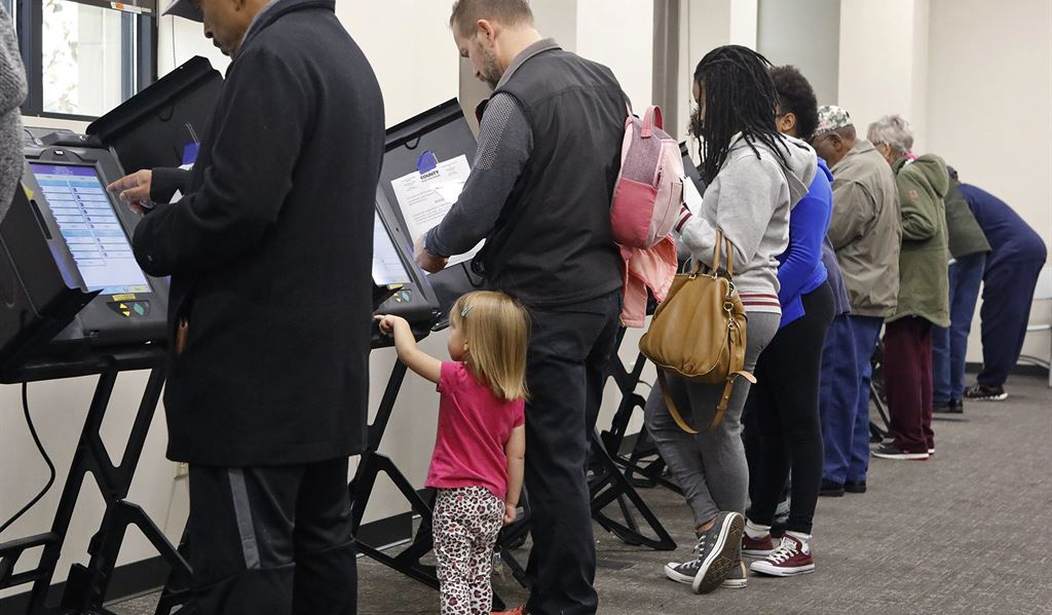Going into Tuesday’s election, Democrats were supremely confident that they would sweep the board and begin a golden age of left-wing dominance at the polls. Nate Silver gave Democrats a 75 percent chance of taking over the Senate. Election “experts” believed that the Democrats would pick up from 5-15 seats in the House.
The party was hopeful of picking off one or two governorships and flipping several state legislatures. Republicans were just hoping to survive this “blue wave” that was almost certainly going to wash over them.
As usual, the Democrats left one important thing out of their calculations: the voter. Sometimes, you get the feeling that Democrats see voters as a nuisance, an impediment to their grand plans to transform the country and wish they’d just sit down, shut up, and do as they’re told.
That may happen someday. But in 2020, voters decisively rejected the far-left agenda of the Democratic Party. At every level of government, from Capitol Hill to Chapel Hill, voters told Democrats to go climb a tree and come back when they have something meaningful to say.
Heading into Tuesday, Republicans had full control of 29 state legislatures, compared with 19 for Democrats. The GOP also held 26 governors’ offices, while the Democrats had 24.
The GOP governors’ count grew by one as Montana voters elected U.S. Rep. Greg Gianforte to succeed term-limited Democratic Gov. Steve Bullock. Republicans also appeared to flip control of the New Hampshire House and Senate, according to tracking by the National Conference of State Legislatures and national Republican and Democratic groups.
As of this writing, the makeup of Arizona’s legislature is still up in the air due to several undecided contests. But even if Democrats succeed in Arizona, it will be a hollow victory. Republican victories mean that the all-important redistricting based on the 2020 census will be conducted under the supervision of 27 GOP governors and possibly 30 GOP state legislatures.
The importance of controlling the redistricting process cannot be overestimated. The GOP wave in 2010 gave them control of 3/5 of state legislatures. That led to control of the House and most of the state legislatures. Expect more of the same after the latest census-driven redistricting.
This brings up the issue of “gerrymandering,” the practice of redrawing congressional districts to give an advantage to whoever is controlling the statehouse. Democrats pretend they would never stoop to gerrymandering but the fact is, both parties do it and they do it equally well. If anything, Democrats are more imaginative in drawing lines, sometimes managing to redraw two districts that pit two Republican incumbents against each other.
Democrats did their best this time around to flip several state legislatures.
After being outspent by Republicans a decade ago, Democrats ramped up their efforts to win back chambers ahead of the next round of redistricting. The Democratic Legislative Campaign Committee and four other Democratic-aligned groups combined to raise more than $100 million this election cycle. They were countered by the Republican state leadership committee, which had a target of about $70 million.
But Democrats failed Tuesday in several of their highly targeted states, including the Texas House, the North Carolina House and Senate, and the Florida House. The result is that Republicans will fully control redistricting in all three of those states, an advantage that’s even more important because each could gain U.S. House seats as a result of its population growth.
The election “will put the Republican Party in a position where we’re able to secure a decade of power across the country” through redistricting, said Austin Chambers, president of the Republican State Leadership Committee.
That may be true, but in several key states, the rules are changing that will make the redrawing of maps if not fairer, at least more sensible. In Michigan, the GOP legislature will have to contend with a Democratic governor’s veto of any attempt to stack the deck. And Ohio voters approved a referendum that would create an “independent commission” to redraw the maps.
But across the length and breadth of the country, Republicans did a lot better at the state and local level than almost anyone was predicting.










Join the conversation as a VIP Member